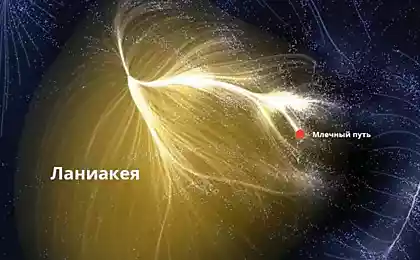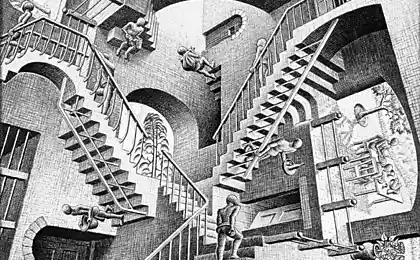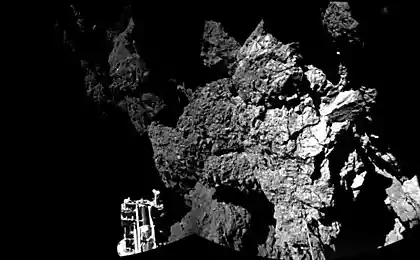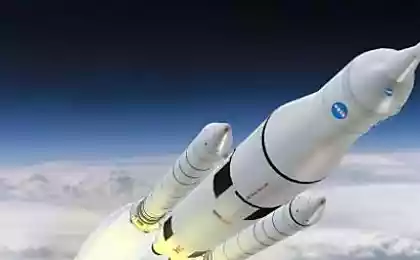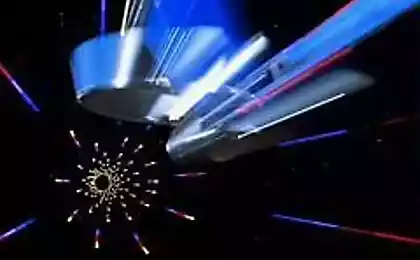571
Project Breakthrough Starshot: Does the probe c of the Earth will reach Alpha Centauri system at a rate of 20% of the light?

In science fiction, space ships have long moved across the universe by means of "wormholes", hyperdrive, and other systems, phenomena and devices. Wormholes hyperdrive or according to some scientists are not at all a fairy tale, and create their theoretically possible. However, not now and not in the near future - we simply do not have the necessary knowledge and technology.
Well, what about to fly to another star at a rate of 15-20% of the light? It's real. So say scientists, popularizers of science, say the authors of the project Breakthrough Initiatives, working on the project Breakthrough Starshot. The project's objective - the creation of spacecraft with a light sail, which are able to reach the Alpha Centauri system for 20-30 years. In order to reach the system for a time and spacecraft must move at a rate of 15% to 20% the speed of light.
What's the plan?
The main idea of the project was announced April 12 this year at a press conference in New York. The founders of the Breakthrough Starshot - Yuri Milner and Stephen Hawking. The project includes proactive advice and Mark Zuckerberg, the head of Facebook. According to Milner, the project cost is not so great - 5.10 billion US dollars. The first ship, he said, can go to the star within 20 years.
As part of the planned launch of Breakthrough Starshot base of the ship, which will orbit a lot of small spacecraft. From the Earth to the solar sails of these devices will be affected by the laser beam. Lasers are powerful enough to solar sails size of 4 * 4 m will be spent several laser beams with a total capacity 1 terajoule (according to some sources - 100 gigajoules).

With laser miniature spacecraft aimed at the Alpha Centauri system, the laser will disperse the probes to the desired speed. When (and if) the earth will fly to the device, they will be able to take pictures of the entire system. Total to Alpha Centauri will send about 1,000 miniature spaceships. Data on land phones will transmit using a miniature laser system - the antenna will serve as a solar sail. Each probe will consist of a chamber, a solar sail, a laser transmission system, plutonium energy source.
And now - about the problems
The project itself looks quite realistic - run mini-spaceships, you can probably. And to reach the speed of 15-20% of the light, probably also possible. But here arises another problem. The fact that at such high speed for the probe will be a problem not only meteor or dust become dangerous collision even with individual atoms. Now scientists are trying to understand how dangerous are these collisions, and how often they will occur (that will, no doubt). Actually, therefore, planned to send 1000 units - according to the authors of the project, some of the probes will remain intact.
The main problem is that interstellar space is not empty. There are dust, and it pretty much have the individual atoms, which are even greater. All of these sites pose a real danger to the probes.
Atoms
Using known data on the concentration of interstellar gas, the authors performed some calculations to obtain a more or less real information about the consequences of such collisions. As it turns out, the most common in the universe, hydrogen and helium are not significant problems. Worst of all have probes in collisions with heavier atoms of elements such as oxygen, magnesium, iron.
According to experts, heavy atoms will evaporate or melt the material of the probe body in the range of 0, 1 mm. Not so much, but if the atoms are frequently encountered, the probe will be in great danger.
dust
Smaller dust particles will cause the destruction of the cabinet on a much larger scale than the atoms. Each piece will vaporize material in the range of 1, 5 mm device surface. But the material is melted to a depth of up to 1 cm. Considering miniaturization of probes is very important.
How can you avoid the dangers of the destruction of the probe?
There are several ways to avoid the destruction of the probes on the way to the goal. One of them - to place a solar sail for a special shield. the probe body is formed into a bullet in order to minimize the probability of collision with the vehicle dangerous dust particles or atoms.
In order to absorb the heat of the probe body is invited to cover the graphite layer. This material will dissipate heat, providing minimal impact collisions with the atoms and particles on the probe.
And another problem is not so obvious. In the evaporation of material in the moment of impact the direction of motion of the machine and its speed will change. 1-2 meetings with the dust particles is not much to change something, but if such a meeting will take place continuously, the unit may deviate greatly from the initial trajectory, speed is also significantly changed. The probe in this case, either do not reach the goal, or will reach, but travel time will increase. What to do with this problem experts have not yet invented. It is estimated the project specialists, each square centimeter of the front face at high speed with the size of about a thousand 0 particles 1 micron and above.
In addition to all the above, there is also a purely technical difficulties. The fact that the probe needs to be very miniaturized to meet the mass limit. All elements of the probe shall withstand the extreme conditions of outer space and acceleration. And focusing powerful laser probes on solar sails - a task with which people can not handle right now due to some technical problems. According to the newspaper The Economist, the project will be possible only after a number of advanced technologies to improve by several orders.
Whatever it was, the project itself is much more real than all the others, which require a nuclear engines or anti-matter, or warp drive and other technologies, which have so far belong to the category of projects is very, very distant future.
Source: geektimes.ru/post/279768/












